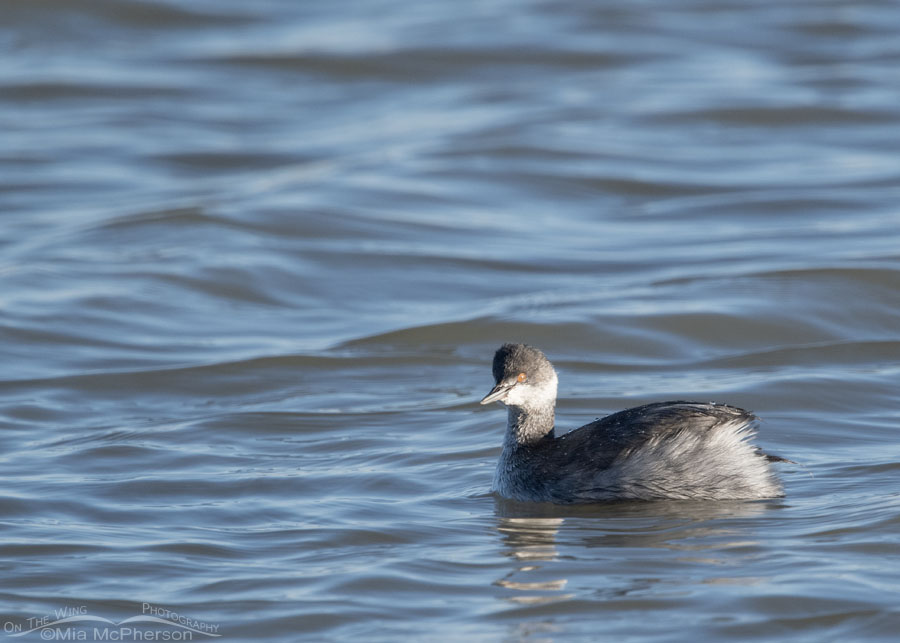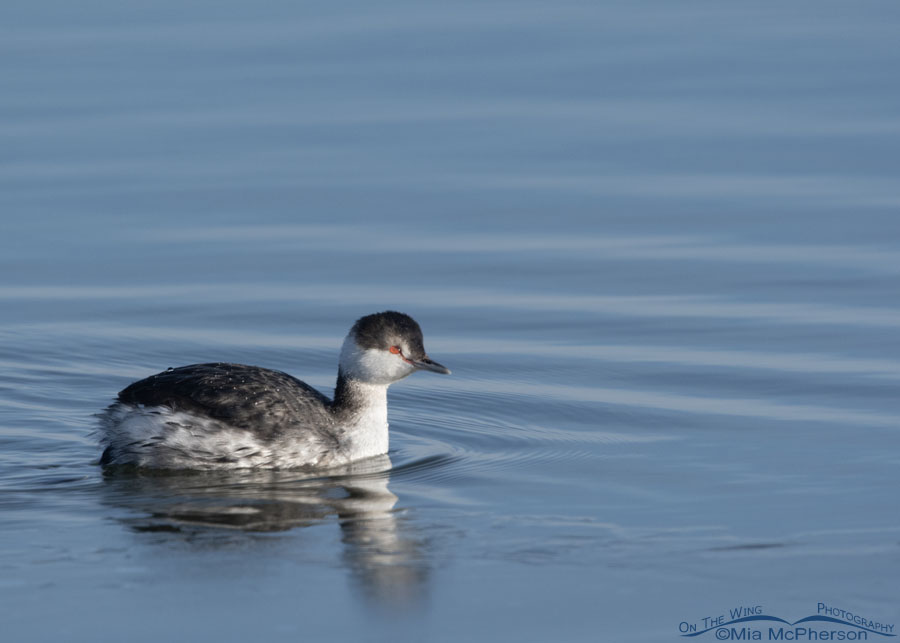This morning, I wanted to share an Eared and Horned Grebe nonbreeding plumage comparison. Why? Because, at this time of year, I can see both species.
Both of these small grebe species can be found in northern Utah during the coldest months of the year. Eared Grebes can be abundant, while Horned Grebes are uncommon.
In breeding plumage, these two small grebe species are easy to tell apart due to their distinctive facial plumage and patterns. But when they are in their winter plumage? Not so much for novice birders.
I’ve been seeing Eared Grebes in the marsh at Bear River Migratory Bird Refuge for several weeks. When I find them I make it a point to stop, scope them all with my lens, and look for Horned Grebes. I’d love to have more photos of both species, especially Horned Grebes.
 Eared Grebe in marsh habitat – November 14, 2022 – Nikon D500, f6.3, 1/2000, ISO 800, Nikkor 500mm VR with 1.4x TC, natural light
Eared Grebe in marsh habitat – November 14, 2022 – Nikon D500, f6.3, 1/2000, ISO 800, Nikkor 500mm VR with 1.4x TC, natural light
Eared Grebe in nonbreeding plumage
Eared Grebes have a black cap that extends downward into a smudge on the cheek, with a grayish neck that accentuates a white chin patch. Their heads are described as ‘less clean-cut’ than Horned Grebes. They are more dusky overall, especially on the neck.
The bills of Eared Grebes are slightly upturned and not as heavy as the bills of Horned Grebes. They also lack the white tip on their bills that Horned Grebes typically display.
 Horned Grebe in marsh habitat – January 11, 2022 – Nikon D500, f7.1, 1/2000, ISO 500, Nikkor 500mm VR with 1.4x TC, natural light
Horned Grebe in marsh habitat – January 11, 2022 – Nikon D500, f7.1, 1/2000, ISO 500, Nikkor 500mm VR with 1.4x TC, natural light
Horned Grebe in nonbreeding plumage
Horned Grebes have a black head that sharply contrasts with a white cheek, gray-black upperparts, and grayish-white underparts. Their necks are usually white on the front. They tend to appear more black-and-white overall.
Their bills appear straighter and heavier than the bills of Eared Grebes. Typically, they have a white tip on their bill but that is not always the case, so I look for the other identification features when it is lacking.
Size Difference
Horned Grebes can be about an inch larger than Eared Grebes, but size in the field, especially when you have a single bird, isn’t always the best measure to use.
Head Shape Differences
Eared Grebes have a thinner neck with a smaller head. The crown is highly peaked above the eye, not flat.
Horned Grebes have a thicker neck and larger head with a flatter crown.
Here are two curveballs, though. Both of these grebe species can raise and flatten the feathers on their heads, so I don’t solely rely on their crowns for identification purposes. Instead, I look for other key identification features. Additionally, without having both species in front of me at the same time, the size of their head is also a feature on which I don’t heavily rely.
Life is good.
Mia
Click here to see more of my Eared Grebe photos plus facts and information about this species. Click here to see my Horned Grebe photos plus facts and information about this species.


Very interesting comparison shots and info. Another contribution to my learning curve. Thanks Mia.
When I lived in AZ we could see both of these species as well. I remember looking for the fluffy butts of the Eared Grebes. Here in Maine we get Horned and Red-necked Grebes. The Red-necked is much larger, but seen from a distance they can still trip you up. For me, it’s always a challenge to use the correct name of the species with the right bird. “Eared,” and “Horned” could describe the same ear tufts, so every year I need to remind myself that we have Horned Grebes here in Maine!
Thanks for these great photos and your very helpful detailed identification guide comparing the Eared and Horned Grebes in their non-breeding season plumage.
I have a hard time identifying them in the winter. About the only place I regularly see both is Quail Creek reservoir in southern Utah.
Both your eyes and your bird brain (which is a compliment) fill me with awe. And gratitude.